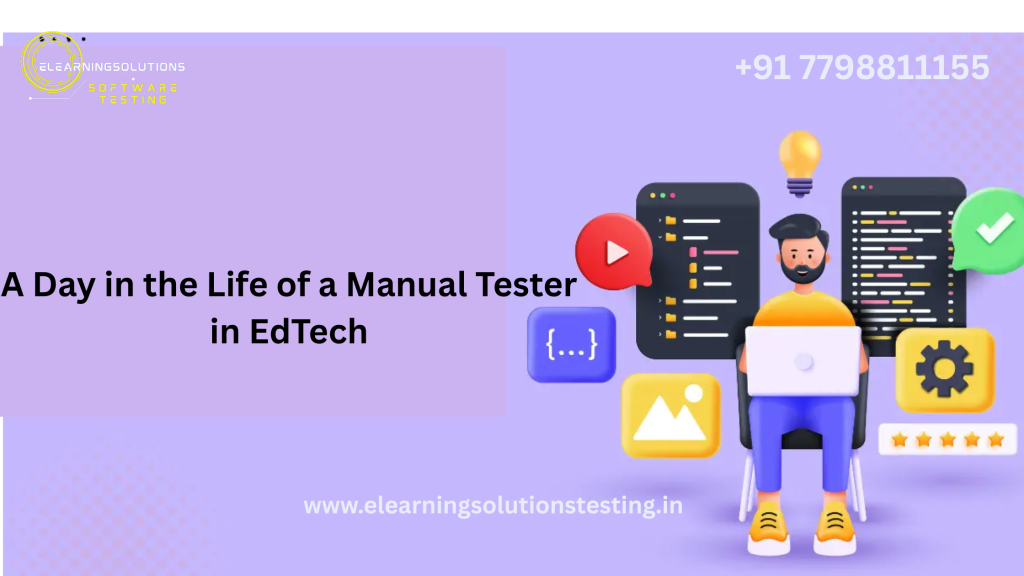The EdTech industry continues to transform learning experiences, offering online courses, live classes, gamified lessons, and mobile-friendly education. But behind every smooth learner experience is a dedicated quality assurance team — and at its heart, a manual tester ensuring the platform works as intended.
Manual testing in EdTech isn’t just about clicking buttons. It’s about understanding how real users — students, parents, and educators — interact with educational platforms and making sure every lesson, quiz, or notification functions flawlessly. Here’s what a typical day in the life of a manual tester in EdTech looks like.
Why Security Testing is Crucial for eLearning Platforms
9:00 AM – Morning Stand-Up Meeting
The day usually begins with a stand-up meeting involving developers, testers, product managers, and designers. In this short session:
- The team discusses current tasks and blockers
- Testers share the status of regression or exploratory testing
- Any critical bugs found in the staging or production environment are escalated
9:30 AM – Reviewing Test Cases and Documentation
After the meeting, the manual tester reviews:
- Test cases for new features or modules being introduced (e.g., a new quiz module or AI-powered progress tracker)
- Updates in requirement documents or user stories
- Feedback from the previous test cycles to avoid repeat issues
They may also update the test management tool with new test scenarios that match user expectations.
10:30 AM – Feature Testing Begins
With fresh builds released by the development team, the tester starts validating:
- Course content uploads: Are videos playing properly? Do files download correctly?
- New UI changes: Is the interface consistent across devices and browsers?
- Enrollment flow: Can users register, log in, and join a course seamlessly?
Manual testers often test on real devices, switching between desktops, tablets, and smartphones to mimic the learner experience accurately.
12:30 PM – Break and Informal Review
A short break is followed by discussions with developers or designers if any UI/UX concerns arise. Collaboration is key in identifying whether a found issue is a bug or a design decision.
1:00 PM – Bug Reporting and Retesting
Now it’s time to document the findings:
- Bugs are logged in a tracking tool with detailed steps, screenshots, and expected behavior
- Testers retest issues that developers claim to have resolved
- Any critical or blocker bugs are flagged immediately for resolution
Testers may also begin regression testing to ensure new updates haven’t broken existing functionality.
3:00 PM – Exploratory Testing and Edge Cases
This is often the most interesting part of the day. The tester steps into the user’s shoes and explores:
- What happens if a student starts a quiz but loses internet?
- How does the platform behave when a video fails to load?
- Are error messages clear and helpful?
Edge cases and real-world scenarios help uncover bugs that scripted automation tests often miss.
4:30 PM – Accessibility and Usability Review
Especially in EdTech, accessibility is vital. Testers check:
- If screen readers work across key learning modules
- Whether all users, including those with disabilities, can navigate the platform easily
- Keyboard-only navigation and contrast compliance for UI elements
5:30 PM – Test Summary and Collaboration
As the day wraps up, the tester prepares a report that includes:
- Test coverage status
- Bug summary and severity levels
- Pending test cases, retests, and any risk areas
This report is shared with the team to align testing efforts with product timelines.
Conclusion
Manual testing in EdTech is both challenging and rewarding. It demands attention to detail, empathy for learners, and strong collaboration with cross-functional teams. Each day brings new learning and a new opportunity to make education better, one test case at a time..
YOU MAY BE INTERESTED IN
ABAP Test Cockpit(ATC) – Introduction and Steps
Salesforce Developer Salary in India An In-Depth Analysis
